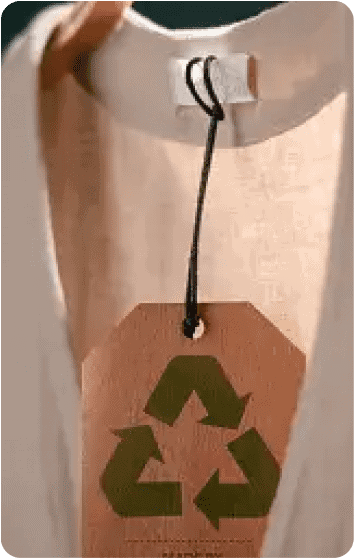In the wake of urbanization and increased awareness about mental well-being, the trend of indoor gardening has captured the imaginations of many. Vine house plants are not just interior design accessories; they’re companions that add life to your living spaces.
And the best part? Many of them are eco-friendly powerhouses that purify air, uplift moods, and offer a host of other benefits. Let’s dive deep into the world of vine house plants, focusing on eco-friendly options and sustainable ways to nurture them.
6 Best Vine House Plants

Credits: mrplantgeek.com
1. Pothos (Epipremnum aureum)
With its glossy, heart-shaped leaves, pothos is a low-maintenance vine that thrives even in low-light conditions. A recent study confirmed its prowess in filtering harmful chemicals like xylene and benzene from the air.

Credits: mygarden
2. String of Pearls (Senecio rowleyanus)
This cascading succulent makes for a beautiful hanging plant. Its low water needs make it particularly eco-friendly, as excessive watering is one of the most common environmental pitfalls in plant care.

Credits: gardenerspath
3. Ivy (Hedera)
Ivy is an evergreen vine that’s not only versatile in its aesthetic appeal but is also a dynamo when it comes to purifying air. Multiple studies have highlighted its effectiveness in removing indoor air pollutants like formaldehyde.

Credits: thespruce
4. Swiss Cheese Plant (Monstera Adansonii)
With its unique, perforated leaves, Monstera Adansonii has become an Instagram sensation. Though it isn’t as robust an air purifier as some other plants on this list, it’s still an eco-friendly option that requires minimal care.

Credits: housing.com
5. Philodendron
These plants are hard to kill, which makes them perfect for beginners. They’re adaptable to various lighting conditions and are known for their lush, vibrant leaves.

Credits: pistilsnursery
6. Hoyas
These come in various types—some have scented flowers, some have variegated leaves, and all are relatively easy to care for. Hoyas don’t like being over-watered, making them another eco-friendly choice.
Why Vine House Plants?
Aesthetic Appeal
“Plants bring a room to life,” says Marie Davis, an interior design expert. Vine plants offer an artistic flair that can turn a bland room into a cozy, inviting space. Their trails can be designed to flow along shelves, windows, or even spiral around room dividers, offering endless decorating possibilities.
Space-Saving Nature
For those living in smaller spaces, vine plants are a dream come true. They can be hung from the ceiling, placed in wall-mounted planters, or allowed to cascade elegantly over the edge of a tall bookshelf. They offer the beauty of greenery without taking up too much valuable floor real estate.
Air-Purifying Qualities
According to a study by NASA, several types of vine plants are excellent at purifying indoor air. For instance, pothos and ivy remove toxins like benzene and formaldehyde, effectively cleansing your indoor environment.
Easy Maintenance
Vine plants are often very forgiving, making them excellent choices for both gardening novices and busy people. “Their ease of care makes them perfect for anyone new to the world of houseplants,” notes Dr. Emily Brown, a botanist and plant expert.

Sustainable Methods for Growing Vine House Plants
Organic Soil and Fertilizers
Using organic, peat-free soil and compost can offer your plants a rich growing medium without harming the environment. There are several organic fertilizers available that are equally effective and eco-friendly.
Proper Watering Techniques
“It’s not just what you water, but how you water,” says Michelle Lee, an environmental conservationist. Use a watering can with a narrow spout to direct water only to the plant’s base, minimizing waste.
Natural Light or Energy-Efficient Grow Lights
Solar tubes or skylights can amplify natural light for your plants. If you’re relying on artificial light, choose LED grow lights that consume less energy and last longer than traditional bulbs.

DIY Natural Pesticides
Don’t reach for the chemical-laden pesticides just yet. You can make your own using common household items like dish soap, garlic, or even hot peppers. Check out our DIY guide for creating eco-friendly pesticides.
Garlic and Onion Spray
Ingredients:
- 1 whole garlic bulb
- 1 large onion
- 1 teaspoon of cayenne pepper
- 1 quart of water
- 1 tablespoon of liquid soap (preferably biodegradable)
Instructions:
- Peel and Chop: Peel the garlic and onion and chop them into small pieces.
- Blend: Put the chopped garlic, onion, and cayenne pepper into a blender. Add a small amount of water and blend until it forms a smooth paste.
- Steep: Transfer the paste into a container and add the remaining water. Let the mixture sit for several hours or overnight to steep.
- Strain: Strain the mixture to remove the solid particles, retaining the liquid.
- Add Soap: Add a tablespoon of liquid soap to the strained liquid. This helps the spray to adhere to plant surfaces.
- Mix Well: Stir the mixture well to combine.
- Test: Before spraying your entire plant, test a small area first to make sure it doesn’t harm the plant.
- Apply: Use a spray bottle to apply the mixture to the affected plants. Make sure to cover all surfaces, including the undersides of leaves.
- Store: Store any leftover spray in the refrigerator for up to a week. Shake well before reusing.

Sustainable and Eco-Friendly Ways to Manage Vine House Plants
Pruning Techniques
Pruning doesn’t have to be wasteful. If you’re careful and strategic, you can propagate the cuttings. Sarah Johnson, a home gardener, says, “I’ve successfully propagated ivy and pothos from cuttings and even gifted them to friends.”
Propagation
This method of plant multiplication is not only sustainable but can also be a meaningful gift. Instead of buying more plants, why not propagate what you already have and share them?
Upcycling Household Items
Your vine plants don’t necessarily need brand-new pots. An old teapot, cookie jar, or even a wicker basket can serve as a unique and eco-friendly planter.
Natural Remedies
Common household items can often solve your plant troubles. A mixture of water and dish soap can handle most pest issues while sprinkling cinnamon on the soil can help prevent mold.
Tips and Tricks
- Get creative with how you display your vine plants. Old ladders can serve as excellent plant stands, and unused picture frames can be transformed into vertical gardens.
- With a little care and some twine, you can train your vine plants to grow in particular patterns or directions. This customization allows you to integrate the plants seamlessly into your home’s design scheme.
- Some plants go dormant in winter and require less water. Knowing the seasonal needs of your plants will help you provide targeted care year-round, says horticulturist David Lewis.
Conclusion
The manifold benefits of vine house plants—be they aesthetic, functional, or psychological—are too compelling to ignore. But when you can cultivate these greens in an eco-friendly and sustainable way, you’re not just nurturing plants; you’re nurturing a healthier planet.
Looking for more green thumb inspiration? Dive into our Home & Lifestyle blogs for invaluable tips and hacks on sustainable gardening. Click here to grow your knowledge!







